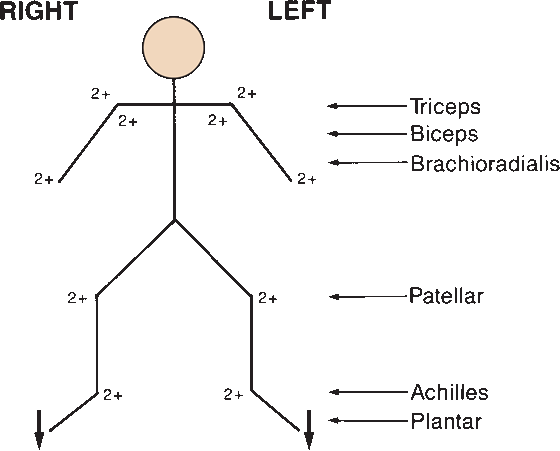
Deep Tendon Reflex. A stretch reflex is an involuntary reaction of a muscle to being passively stretched by percussion of the tendon. Although the reflex has a sensory and motor component deep tendon reflex testing. Check the deep tendon reflexes using impulses from a reflex hammer to stretch the muscle and tendon. When a reflex is hyperactive that muscle often will respond to the testing of a nearby muscle.

When these reflexes are disrupted hyperreflexia disease induced or hyporeflexia areflexia drug induced occurs. Stretch reflex tests are used to determine the integrity of the spinal cord and. This article will focus on the deep tendon reflexes which are more appropriately named and will be referred to herein as muscle stretch reflexes msr. They are the one facet of the clinical examination that is objective table 4 9. The limbs should be in a relaxed and symmetric position since these factors can influence reflex amplitude. Msr grading is based on a clinician s subjective evaluation of amplitude with a wide range of what can be normal.
When a reflex is hyperactive that muscle often will respond to the testing of a nearby muscle.
There are five deep tendon reflexes and a number of superficial and visceral reflexes covered here. Responses to mental status testing and motor examination performance on sensory testing and even gait can be consciously altered by the patient for any of a variety of reasons. Although the reflex has a sensory and motor component deep tendon reflex testing. There are five deep tendon reflexes and a number of superficial and visceral reflexes covered here. Deep tendon reflexes are actually muscle stretch reflexes mediated through neuromuscular spindles. Deep tendon reflexes demonstrate the homeo stasis between the cerebral cortex and the spinal cord.